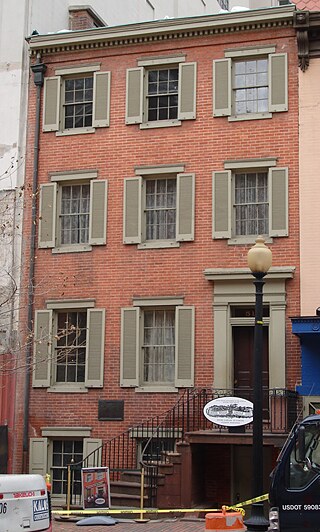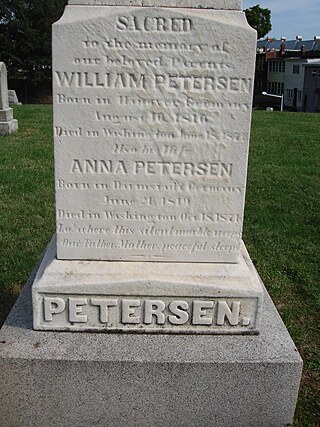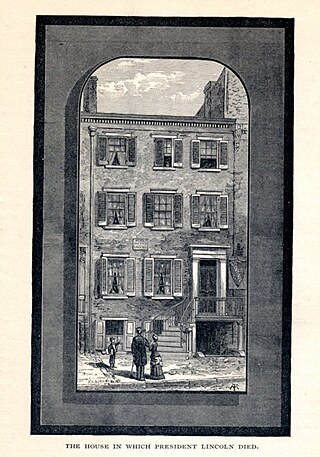Petersen House / The House Where Lincoln Died
German Roots in DC
-

Petersen House/House Where Lincoln Died, 2011.
-

The tombstone of William and Anna Petersen, owners of the Petersen House, is located at Prospect Hill Cemetery. Photo October 2010.
-

Drawing of the Petersen House.
-

Detail of signage.
In 1878, a native Berliner, Louis Schade (1829–1903), another prominent "Forty-Eighter" who came to the United States in 1851, purchased the house at 516 Tenth Street NW from the Petersens' heirs. He published The Washington Sentinel from his home. Louis Schade sold the house to the federal government in 1896.
Heinrich and Julius Ulke, Photographers, Scientists, Artists
Heinrich (Henry) Ulke and his brother Julius Ulke were both "Forty-Eighters," i.e., participants in the failed 1848 revolution in Germany. In this, they were like many other prominent German-Americans in Washington and across the United States. The Washington City Directory for 1870 shows that the two brothers had their photographic studio at 1111 Pennsylvania Avenue, NW, just around the corner from the Petersen House, where they boarded.In addition to being a successful photographer, Henry Ulke (1821-1910) was a portrait painter, sculptor, and botanist who became well-known internationally in both the artistic and scientific domains. Julius Ulke took the historic photograph showing the room at the Petersen House a few minutes after President Lincoln's body was removed from the bedroom, where he died at 7:22 am on April 15, 1865.
Louis Schade, Journalist
A native Berliner, Louis Schade (1829-1903), was another prominent "Forty-Eighter" who came to the United States, arriving in 1851. Schade was an attorney and the publisher of the influential English-language weekly, The Washington Sentinel, from 1873 until his death. The newspaper was published from Schade's home, the Petersen House at 516 Tenth Street NW (the house where Lincoln died, which Schade purchased in 1878 from the Petersens' heirs) until 1893.Louis Schade's political life shows how complicated and unpredictable German-Americans and Forty-Eighters could be. Forced to leave Berlin because of his anti-authoritarian and pro-democracy political activities as a student in 1848, Schade became a well-known journalist and political activist in Chicago. He was a close friend and supporter of Illinois Senator Stephen Douglas in the Lincoln-Douglas campaign, which revolved around issues of slavery. After moving to Washington, Schade was known to support the southern states as the United States moved toward Civil War. After the war, Schade served as defense attorney for the Swiss-born doctor (Confederate) Major Henry Wirz, who was accused of war crimes in the deaths of Union prisoners held in the infamous Andersonville prison where Wirz was commander. Wirz was found guilty in what is still regarded as a hotly controversial trial and hung on November 10, 1865. Schade is said never to have gotten over what he saw as a grave miscarriage of justice.
During his thirty years as editor of The Washington Sentinel, Louis Schade remained a strong Democrat and was much involved in local politics. He was a leader, for instance, in the fight against corruption in the administration of Governor Alexander Shepherd, a close associate of Schade's fellow 48er, the architect Adolf Cluss. With the coming of the Spanish-American War in 1898 and American acquisition of foreign territories, Schade--like many other prominent Americans (Carl Schurz among them)--spoke out strongly in opposition and became active in the Washington Anti-Imperialist League.
Schade's first child, Anita, was born two doors down the street from the Petersen house; his other four children were born in the increasingly famous house at 516 Tenth Street NW. Anita Schade founded Washington's German Literary Society in 1901 and was active in the commemorations of the 100th anniversary of Goethe's death in 1932. Louis Schade sold the Petersen house to the federal government in 1896.